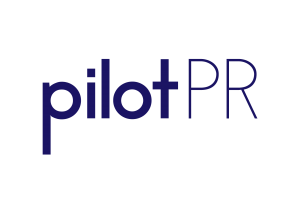In-house leaders already in the c-Suite or on their way there are most likely to want to build their profile internally than externally according to a group of 40 senior leaders I surveyed recently.
Some of these people were already on the executive team, many are on their way there, and they come from diverse industries – government to financial and professional services to tourism and infrastructure.
Almost 60 percent of these leaders were seeking a pathway to build their visibility with internal stakeholders, something that’s especially relevant since COVID relegated us to remote working and the in-office visibility that naturally happens when you’re sharing a space evaporated. Even when we return to the office, all of us will be navigating reduced visibility as we balance hybrid working.
Of this group, almost 30 percent are planning to build their reputation with internal and external audiences, and 15 percent are planning to prioritise external audiences only.

The February masterclass focussed on how in-house leaders can build their reputation to accelerate their career.
Research to date shows remote working has resulted in ‘visibility slippage’ for most professionals. Even when lockdowns aren’t in place, more professionals are choosing to work from home or combine the office and home. A study published in Harvard Business Review found that Chinese workers who returned to the office rather than work from home when lockdowns were lifted were 20 percent more likely to be promoted.
When COVID first made remote working the norm in early 2020, some leaders said that when it was time to return to the office they’d let their team choose the days they would work from the office versus the days from home. But this creates an issue for teams and leaders that colleagues and their managers may never share physical space to work because their days in the office don’t align.

Covid made working from home the norm for two years. Leaders can now address the ‘visibility slippage’ remote working has created.
The group of leaders I surveyed were given the option to respond with ‘Building my reputation is not a priority for me right now’. No one clicked this box, so you can assume visibility slippage is on leaders’ minds.
So how can you be visible as a leader – internally or externally – when you, your team and your stakeholders are balancing the style of hybrid work that suits them? In-house leaders wanting to be more visible, especially externally, also need to consider their company’s positioning on social media and approach to executive visibility. Eight percent of my survey group said they’d been burned before when it came to being more visible at work.
1. Be visible online
Whether it’s internal or external people you want to reach, you need to be online in some way. For an internal audience you can give an update to the ELT or another department on the results of a project your team has just finished, or you can write an article on the same for your in-house blog. Externally, you can be active on LinkedIn and pitch yourself for being on a panel at an industry event.
A respondent said to me ‘I’m not ready for social media.’ It’s 2022 and that ship has sailed. If you want to build your reputation as a leader it’s time to contribute on the platform that’s right for you. If this is you, a good way to get over this can be prioritise your internal audience first and once you’re comfortable in that space, expand your visibility to external stakeholders via social media as well.

Being visible as a leader on the right social media platform for you is essential.
2. Give it purpose
Many leaders know that being visible in their industry will benefit their career or the growth of their business, but if it doesn’t have meaning for you you’ll probably keep pushing it down your list of priorities. If it’s something you want to do, taking the time to figure out why and how you can do it so it has purpose for you will help you get greater results faster. Why? For one, you’ll start. Second, you’ll be more proactive because it’s important to you and you know why you’re doing it. Third, you’ll keep doing it.
3. Bring your company on the journey
Whether you’re an in-house leader, founder of a business or a CEO, bringing your company on the journey is essential. There is a way to balance sharing your IP and building a profile for yourself as a professional while also supporting your company’s brand visibility (and avoiding getting burned by the comms team if you’re an in-house leader). If you’re clear with the relevant people about what you want to do you’ll probably be given more freedom.
No matter the stage you’re at with your reputation, my advice is always to start simple. It’s easier to add visibility to your strategy as you go, rather than over-commit and disappear. Plus, this approach gives you the freedom to figure out what works for you – you might be a great speaker and enjoy giving ‘Town Hall’ style updates at company events or you might find the insights your sharing on the results the work you and your team are doing is right for you.
Hybrid working is here to stay. We’re learning to live and work with COVID and now that lockdowns, homeschooling and most restrictions look behind us, many leaders have capacity to look at their future again and incorporate this work on their visibility.
I’m presenting to a larger group of female non-executive directors from around the world later this month. It will be interesting to compare their priorities and barriers for building their reputation with this group.



